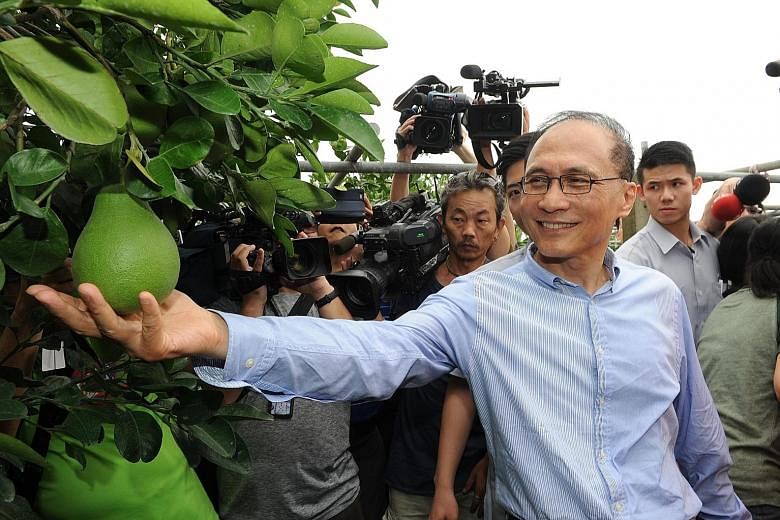When Taiwan went knocking on doors in South-east Asia in the late 1990s seeking favourable terms for its companies, some stayed shut.
The way Professor Norman Yin tells it, China sat on Malaysia and Thailand to halt planned tax break programmes for Taiwan investors.
"It tried to drive the Taiwanese away," says the finance academic from the National Chengchi University (NCU), and former Kuomintang legislator.
What happened then could happen again today, he adds.
"The Chinese will make it difficult for the Taiwanese, by putting pressure on governments in South-east Asia," he says.
It is a looming challenge for new Taiwan President Tsai Ing-wen as she looks to "pivot south" to South-east Asia and India, in a bid to make Taiwan less dependent on China. In her inauguration speech last Friday, she said that the "New Southbound Policy" will "elevate the scope and diversity of our external economy, and bid farewell to our past over-reliance on a single market".
Ms Tsai has made overhauling the economy a top priority, after voters made it clear they wanted change, given how her predecessor Ma Ying-jeou's China-friendly policies failed to create jobs and raise wages.
The idea of diversifying the economy is laudable, say analysts, who agree that the current situation - where two-thirds of the island's overseas investments and 40 per cent of its exports go to China - renders Taiwan highly vulnerable.
Yesterday, for instance, Beijing warned that cross-strait economic pacts could be at stake if Ms Tsai does not uphold the one-China principle. Taiwan's growth forecasts for this year have been cut, due largely to China's slowing economy.
But there is pessimism as to the extent to which the island can extricate itself from China's orbit. This is especially if cross-strait ties head into choppy waters, and perceptions of a zero-sum game grow, making the region feel it has to publicly choose between China and Taiwan.
Says Professor Ku Ying-hua, deputy director of policy think-tank Chung-Hua Institution for Economic Research: "China's influence in South-east Asia is much stronger, be it politically or economically."
International relations research fellow Yen Chen-shen, who is also from NCU, says: "Many South-east Asian countries depend on China."
So, for instance, it is unlikely that countries will ink free trade agreements (FTAs) with Taiwan, which would mean Taiwanese exporters pay tariffs while competitors from South Korea or Japan do not.
Taiwan, to date, has only two FTAs with non-diplomatic allies: Singapore and New Zealand. Talk of FTAs with Indonesia and India never materialised.
At the same time, it is unclear that offering infrastructure assistance funds and loans - one of the few concrete details of the New Southbound Policy so far - will earn Taiwan much goodwill.
China is already embarking on its ambitious One Belt One Road project. "Japan and South Korea are also doing it, and doing it on a very large scale and for a long time," says Prof Ku. "How much resources do we, Taiwan, have to compete?"
This is not to say that President Tsai's endeavour will not succeed.
With or without official help, Taiwanese companies are already going south. A previous "Go South" push started by then President Lee Teng-hui in the 1990s did not succeed because China was opening up at the time, and the region was hit by the 1997 financial crisis.
Today, the situation is reversed.
As labour costs in China rise, Taiwanese manufacturers are looking elsewhere for cheaper alternatives. And the 650 million-strong Asean Economic Community is an increasingly attractive market for Taiwanese exports, from food products and facial masks to electronic goods. It is also possible that setting up Taiwanese industrial parks could help reduce risks for manufacturers, says Prof Ku.
India is another potential bright spot. "Taiwanese companies did not step into India because it is a mysterious and uncomfortable environment for them. But since the labour costs are low and the education level is high, it could work," says Prof Yin.
"Most importantly, the politics favours Taiwan. India does not like China too, and thus will not be prejudiced against Taiwan."
• Additional reporting by Jermyn Chow

